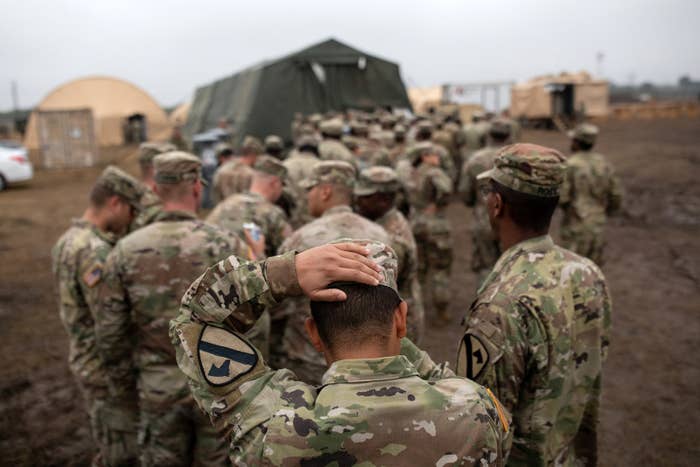
Hundreds of US troops sent to assist the Department of Homeland Security at the US–Mexico border have returned to their home bases, military officials said Friday, even as the Pentagon has extended the deployment into 2019.
The Pentagon said Friday that 4,200 active-duty troops are currently assigned to the border mission — 1,700 in Texas, 1,500 in California and 1,000 in Arizona. That marks an almost 30% reduction from the peak of 5,900 that President Donald Trump ordered to deploy in the days ahead of the midterm elections — a move that critics said had been intended to influence voters.
At least 1,000 US troops have been withdrawn from the border since Monday, according to figures provided by military officials. Roughly 750 of them returned from Texas and Arizona on Wednesday, US Northern Command officials said.
Approximately 6,000 Central Americans remain in Tijuana, Mexico, many seeking to cross into the US, and hundreds of others are attempting to cross the border elsewhere. More than 160 were apprehended in New Mexico on Dec. 6 in a crossing that has gained attention because a 7-year-old girl from Guatemala, who was part of the group, died two days later.
US Northern Command, which is responsible for troop deployments inside the United States, said Friday that troops were going back to their home bases after the “completion of border hardening missions, some engineering, logistics and headquarters elements.” Officials said that despite the reduced troop presence, the smaller number left at the border would still be able to meet the needs of Customs and Border Protection, including engineering and military police at ports of entry in California and Arizona, medical support for migrants and border agents, and air transport for agents.
Which units will be rotated out was not announced.
Trump’s decision to send thousands of active-duty troops right before the election was criticized by his opponents as a political stunt to bolster support for Republican candidates.
The troops had a limited role, as they were barred from enforcing immigration or criminal law, and could not detain or arrest anybody at the border. Instead, they provided logistical and transportation support, ferrying CBP officers in US Army helicopters, put up temporary housing, installed razor wire, and stood by for any medical assistance.
Over the course of their deployment, US military engineers placed roughly 70 miles of wire obstacles and barriers at 22 ports of entry in Texas, Arizona, and California, officials said Friday. They also highlighted that military police units spent 10,000 hours in unit training and drills with CBP.
The troops first began arriving at the US–Mexico border in late October, tasked with engineering work, logistical support, and medical assistance. Of the 39 initial units sent to the border, five were made up of public affairs specialists, combat photographers, and media support staff — troops assigned to provide photos and news releases about what the other units were doing. A large proportion of the media released by the US military and featured prominently in news coverage around the world showed soldiers stringing up concertina wire along the border. The number of photos and videos posted about the border deployment has dropped as well.
Even though the Trump administration said the deployment was a response to large groups of Central American migrants who were crossing Mexico toward the border, the bulk of active-duty troops were deployed to Texas, not California, where the caravans were heading. Eventually, the Pentagon reassigned more troops to California at the request of CBP.
“This is a mission that’s nontraditional because it’s here in our country,” Mattis told troops in Texas when he visited last month. “Generally, we do homeland security overseas.”

